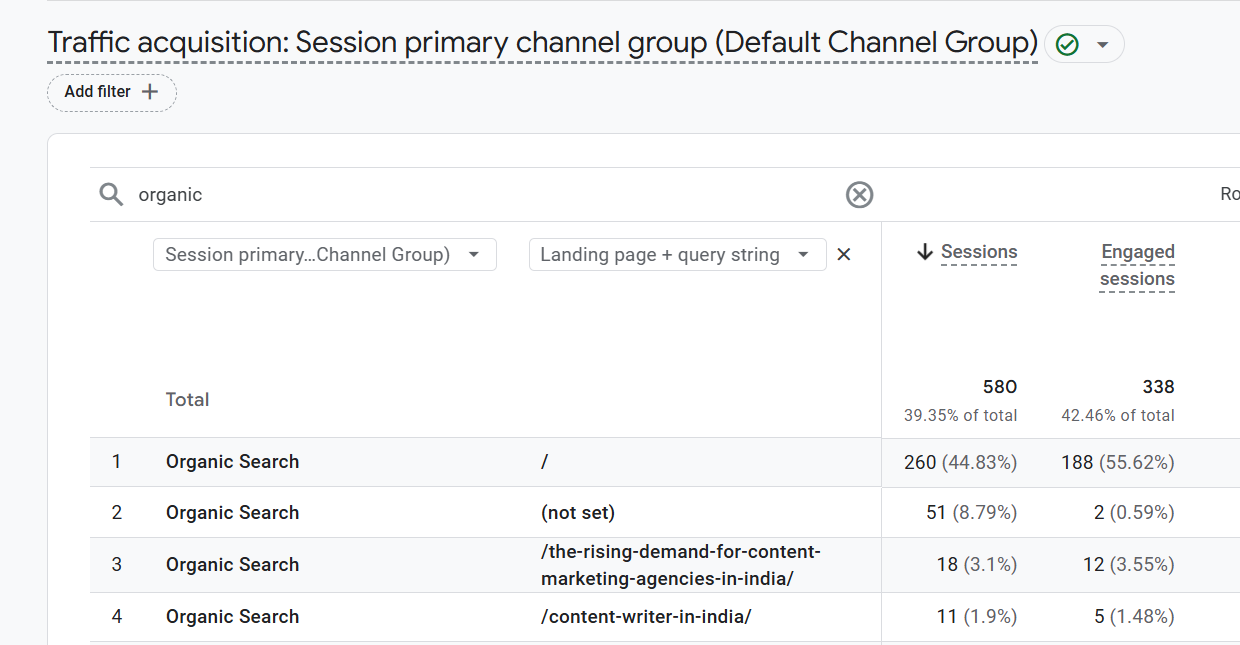How to Identify B2B SEO Keywords That Drive Conversion
Every business wants to get ranked on Page 1 of Google Search, AND also get sales from those clicks. For that to happen, you have to make sure that you are targeting the right keywords. This simply goes beyond ranking for keywords.
It is about ranking for B2B keywords that give you conversions.
Finding those keywords is much more difficult than you think. So, how do you get started?
1. Start with the Keyword Planner Tool
Start off with the keyword planner tool. This will help you identify keywords that are relevant to your business. You can pick keywords based on the search volume.
Here are some parameters to pick the keywords:
- Are they relevant to your services or business?
- Are they tapping into the right search intent for your audience?
- Does it have a good search volume?
Bonus tip:
- Also, look at the keywords that are used by your competitors
- A good search volume is difficult to assess for B2B – look at the highest keyword search volume and find a mid-ground from there
2. List the Keywords Based on Intent
The next step is to take all of the keywords and place it in a sheet. Now, you need to list them based on intent.
Searches can be put in 4 categories
- Informational – Person is looking for broad information
- Navigational – Person is looking for a specific brand website
- Research – Person is in the evaluation buying stage and their searches reflect that
- Transactional – This is when a person is ready to make a purchase
Out of which, navigational and transactional search have a high conversion intent. While research has a medium search intent.
These are the keywords that are going to drive your conversions for your SEO.
3. Implement the Keywords
Now that you have the keywords listed, you need to implement them. Keywords are important for content writing and SEO. There are 3 ways you can do that.
- On-page SEO
- Use primary keywords in titles, meta descriptions, headings, and URLs.
- Add them naturally in the intro, conclusion, and throughout content.
- Use keyword-rich alt text for images.
- Avoid keyword stuffing—prioritize readability and user experience.
- Blog content creation
- Choose one primary keyword per blog post.
- Support it with related secondary keywords.
- Write detailed, valuable content that fully answers users’ questions.
- Structure posts clearly with headings and subheadings.
- Include internal links to related service or product pages.
- Service page creation
- Optimize each page around a specific service-related keyword.
- Highlight key benefits, pricing, FAQs, and calls to action.
- Include customer reviews or case studies for trust.
- Add location-specific terms if your business is local.
- FAQ Creation
- Identify common questions your audience searches around the search term.
- Answer clearly and concisely using targeted keywords.
- Use schema markup for FAQs to increase visibility in rich snippets.
4. Find the keyword driving conversions
Most SEO strategies go up to step 3 and stop. However, if you really want your B2B SEO strategy to go beyond the norm – you have to do this next step – assess the data and improve the keywords you’ve picked.
Correlate keywords → landing pages → conversions
What does this include?
- Go through keywords that are driving traffic to your website
- Identify which keywords are driving conversions
Here’s how you can do that:- Navigate to Reports > Acquisition > Traffic acquisition.
- Filter by Session source/medium or Session campaign.
- Use Secondary dimensions to add Search term, Landing page, etc.

You can also use Google Search Console to get insights.
You need to identify which landing pages are driving conversions and correlate that to the keyword driving traffic to those landing pages.
5. Find more Keywords to Drive Conversions
Now that you know which keywords are driving conversions, you simply need to find more. Build keywords clusters that reels in more similar traffic.
Once you’ve identified the keywords that are driving conversions, the next step is to scale their impact by finding more related, high-intent terms. Start by grouping these top-performing B2B keywords into clusters based on business needs or pain points—for example, if “enterprise CRM software” converts well, related keywords might include “CRM for SaaS companies,” “scalable CRM solutions,” or “B2B sales pipeline management tool.”
Use platforms like Google Search Console, Ahrefs, or SEMrush to uncover long-tail variations and related queries aligned with the same buyer intent. Focus on keywords that signal a decision-making phase—like “compare,” “solution,” or “vendor”—and align each cluster with targeted landing pages, whitepapers, or product demos. These keywords will vary depending on your industry, product and service.
This allows you to attract more qualified business leads who are actively looking for solutions, boosting both traffic quality and conversion rates.
Identifying B2B SEO Keywords that drive conversion is the holy grail when it comes to B2B SEO. These 5 steps will put you in a good place to achieve them.
By aligning search terms with buyer intent, clustering related queries, and optimizing your content or landing pages accordingly, you move beyond just increasing traffic—you attract the right traffic.
And this will ensure that your B2B SEO is driving conversions.







